The sky cleared late afternoon but, after days of rain, the air tasted of damp as the air temperature dropped after sunset.
Once home from work, I set up my 30×100 APM binoculars to check on R Corona Borealis before it set. I have been following this star as it was at its brightest during the summer months. It then faded to 8.3 but at 1930 I estimated it at magnitude 7.4 – nearly a magnitude brighter. Once the measurement was complete the binos were swung over to the waxing 9.6-day Moon. Sinus Iridum was beautifully lit but it was then time for family dinner. Observing the moon would have to wait.
Once the observatory was unlocked I prepared my target list. I had been given a list of lunar objects requiring further imaging as advised by the BAA Director, Bill Leatherbarrow. With the list in hand and the moon on the laptop screen, I followed the terminator seeing if my targets will be of further interest to the BAA.
All pictures below are using my C11, x2 barlow, ASI224MC and a 685nm IR filter. I take 10k frames using firecapture, stack in AS3 and then sharpen in Registax before adding labels and notes in photoshop. The seeing was mostly poor with occasional periods of calm.
First of all, the crater Bullialdus was used to check focus.
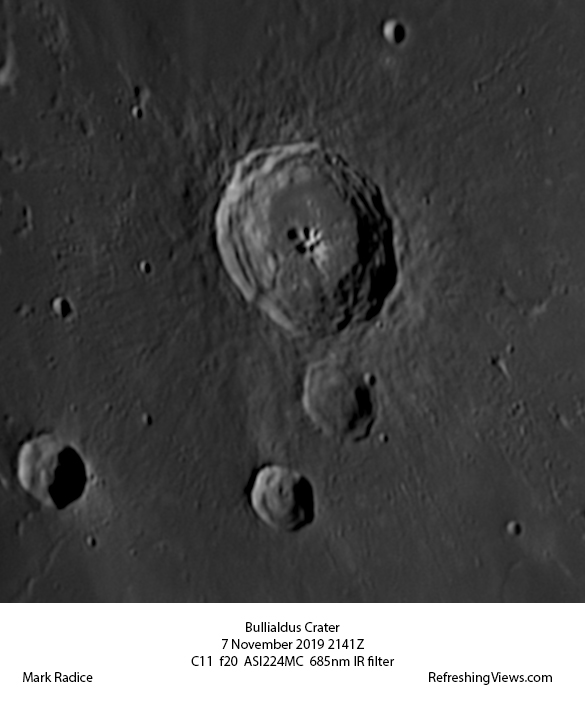
The dome fields near Hortensius and Milichius were then next. Each of the Hortensius domes are small volcanoes each only 100-400m high and around 1.5 km in diameter. Likewise Milichius Pi, around 250m high with a base of 2km, appeared very prominent alongside the terminator.
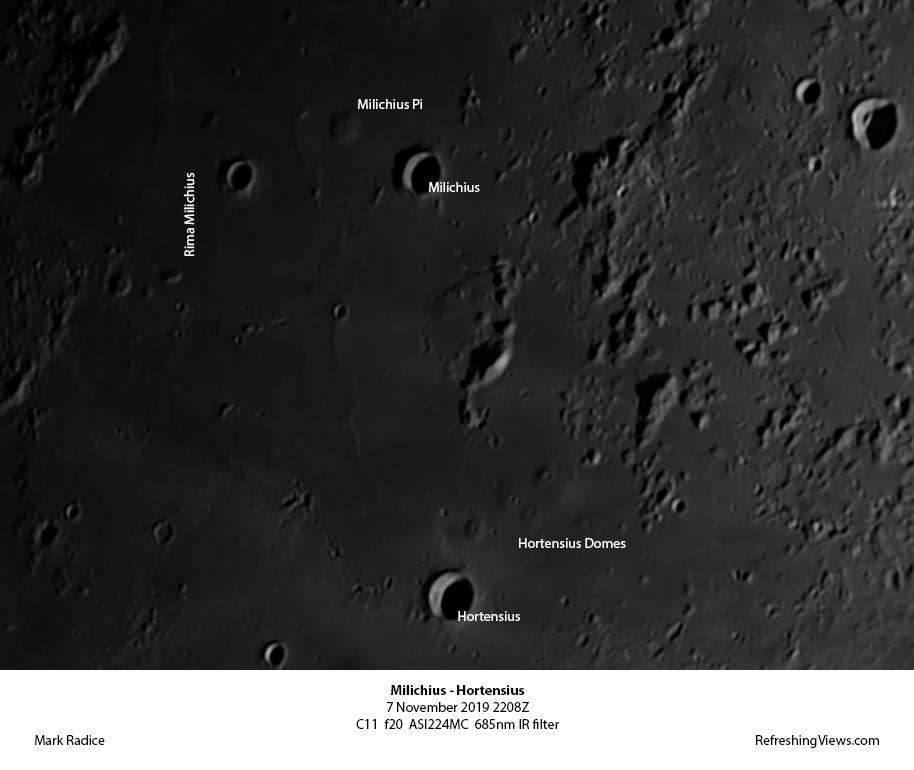
My list had the tiny rille Rima Milichius. With some squinting and averted imagination, there is the faintest of hairline cracks visible. Something to return to later.
Further south of Copernicus is the Apollo 12 landing site. Although the approximate area could be readily identified, the precise location took some effort using my lunar atlas. It was fascinating to think that, beyond the resolution of my telescope, there is a lunar lander waiting on the moon’s surface.
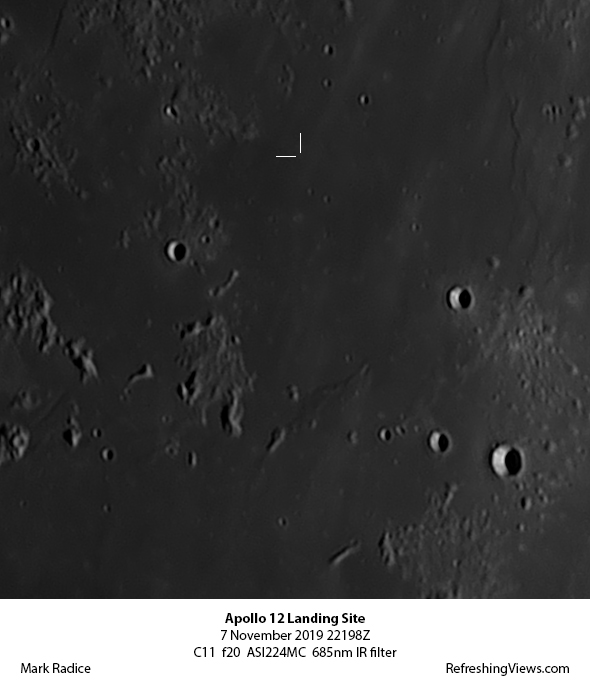
Returning to Copernicus (96km dia) it was wonderful to have the crater ramparts, central mountains and ejecta-melt filling the laptop screen. Beautiful.
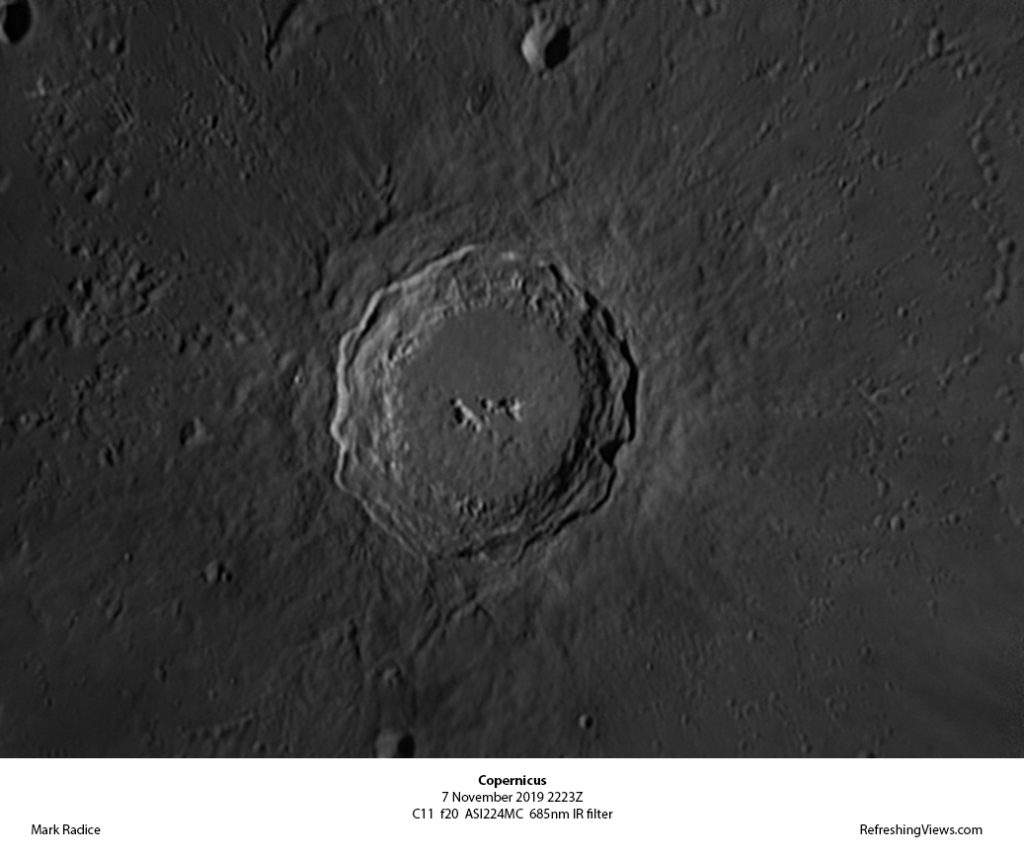
Finally, I had spotted the crater Delisle (25km) and the unnamed (in my atlas) triangular-shaped mountain-grouping on the western shore of Mare Imbrium. Delisle, and Diophantus to its south, appear to be on a plateau of higher ground marked by a connecting ridge running north-south. The craters and mountains were all casting dramatic shadows across the mare. Another beautiful sight.
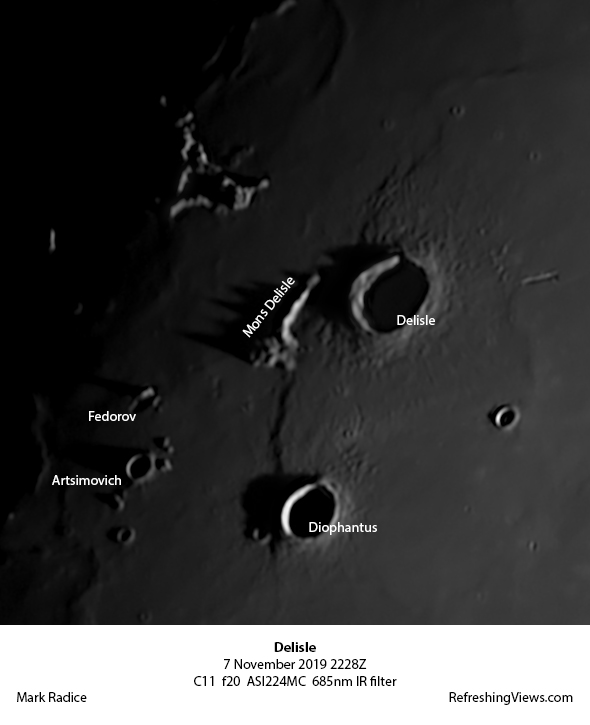
So one variable star measurement, 1 tentative challenging object (Rima Milichius), 1 definite (Apollo 12) and a whole heap of other objects captured. Time to call it a night and shut down the observatory.